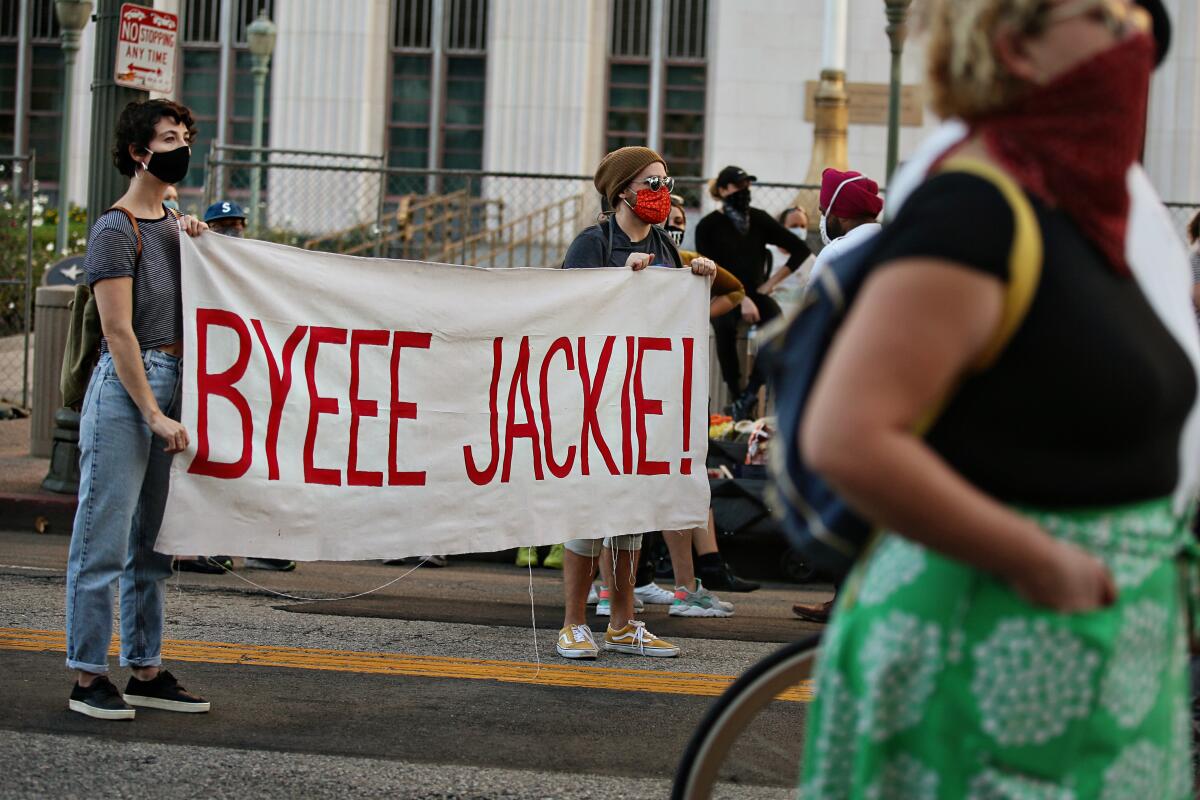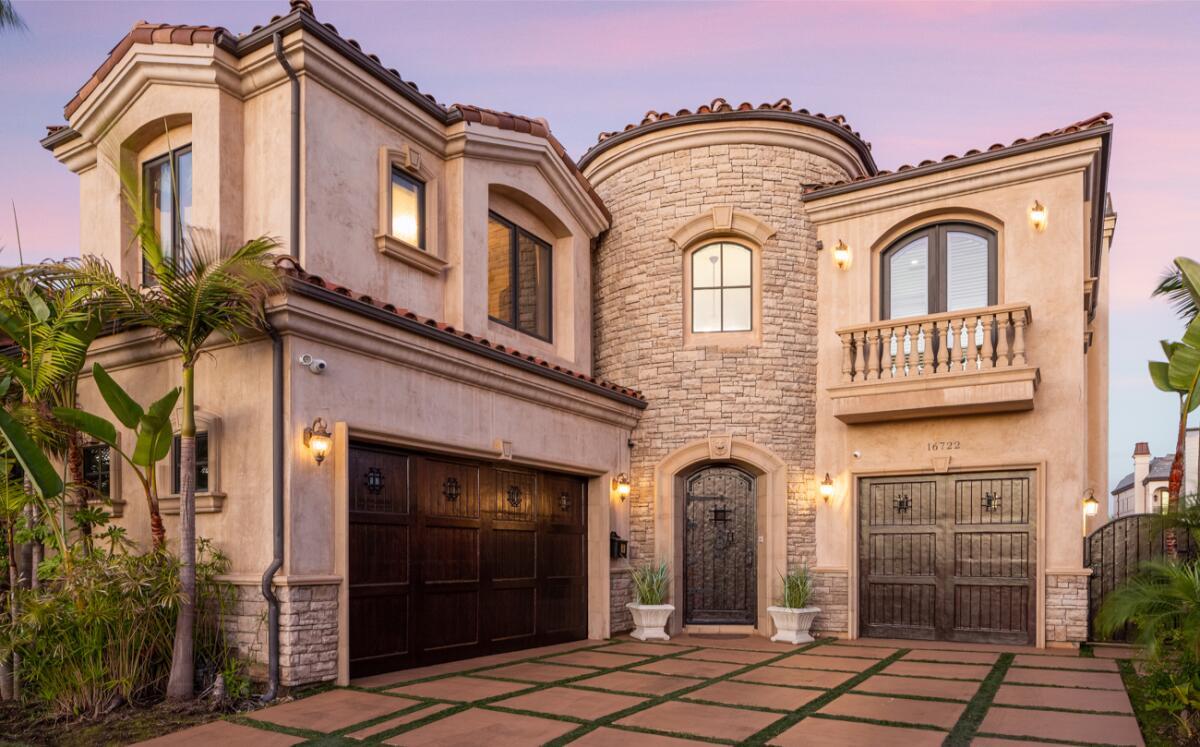Real Estate newsletter: A fond farewell

- Share via
Welcome back to the Real Estate newsletter. I come bearing bad news: This will be the final installment of this series.
I’m writing this from a hotel room in Atlanta, where I’m in town to accept an award for the best newsletter from the National Assn. of Real Estate Editors. It’s an honor and a fitting final lap for this weekly feature, which I started writing two years ago and still love writing today.
Over the course of nearly 100 weekly newsletters, we’ve tried to make sense of this mammoth of a market, exploring every angle of the wild, wacky world of buying, selling, building and renting real estate in Southern California.
We looked into the eccentric offerings of the market: a convent turned into a mansion, a 19th century water tower fashioned into a beach house, and a gothic Victorian with a blood red swimming pool.
We investigated the wealthy with deep dives on a shopping spree fueled by shady pandemic fortunes and the seemingly eternal turmoil of The One (and the many, many people fighting for its profit).
We went into and underneath homes on your behalf, finding (relatively) good deals at the lower end of the market and uncovering secrets found beneath the floorboards of L.A.’s aging house properties: human skulls, weapons caches … things of that nature.
Finally, we analyzed the herculean, Sisyphean and (insert your mythological figure of choice) task of navigating Southern California’s real estate market, tracking its ups, its downs, its difficulties and using all that information to create an all-encompassing, step-by-step guide to buying a house here.
I inherited this newsletter from real estate journalism legend Lauren Beale and did my best to put my own spin on it. I wanted this series to be a one-stop shop for understanding this bizarre housing market, and if you, dear reader, learned anything about what it means and what it takes to live here, then I have succeeded.
I can’t thank you enough for subscribing, and please know that I’m not going anywhere. As part of a broader newsroom restructuring, I’ve moved from the Business section to the California section, where I’ll be continuing my coverage of luxury real estate. This newsletter is ceasing so I can have more time to dive into the big stories — all of which will be available on the Real Estate page. In the meantime, I encourage you to check out our other newsletters including Essential California. Pick and choose from a wide array of offerings here; a personal favorite is Screen Gab.
I’ll miss being in your inbox every Saturday, and I’ll miss getting your thoughts and responses in my inbox soon after. Please shoot me an email at jack.flemming@latimes.com anytime. I read and appreciate them all.
Thanks again for subscribing these last two years. As with reading any of my work, it means a lot.
— Jack
While we’re here, let’s dip into the week’s top headlines for old time’s sake. After watching home values rise at a nearly constant pace for the last decade, we can confidently say that home prices are falling.
Southern California home prices hit an all-time in May, but now, they’re nearly 6% below that — a significant enough number to declare that falling prices are not just an anomaly.
On the luxury side, Huntington Beach’s former mayor pro tempore — perhaps better known as UFC fighter Tito Ortiz — put his beach house on the market a few months after it was broken into.
We also got the latest installment of Liam Dillon’s stellar “Gimme Shelter” podcast. It features a conversation with an urban planning professor at UCLA looking into a lesser-known contributor to California’s housing crisis: parking spaces.
Higher mortgage, lower prices

For the first time in a decade, home prices in Southern California are definitively falling, writes Andrew Khouri.
The typical Southern California home price is now nearly 6% below the all-time high reached in May, according to data released Wednesday by Zillow.
In September, the typical home price for the six-county region dropped 0.6% from August to $817,316, marking the fourth consecutive month that prices declined from the prior month. That hasn’t happened since early 2012.
Fighter looks to tackle a sale

Longtime UFC fighter Tito Ortiz is asking $4.8 million for his Mediterranean-style home in Huntington Beach, the city where he served as mayor pro tempore last year.
The listing arrives a few months after the house was burglarized. In June, TMZ reported that thieves ransacked the Davenport Island residence in Huntington Harbor and stole a safe while Ortiz was away.
A Huntington Beach native, Ortiz became politically active in the community when he ran for City Council in 2020 and won an open seat. He briefly served as mayor pro tempore but resigned in June 2021, citing personal attacks after a controversial stretch that saw him speak out against mask usage during the pandemic and file for unemployment against the city despite not having his hours cut.
How parking lots affect affordable housing

The cost of constructing low-income housing in California is the highest in the nation, with some apartment buildings totaling more than $1 million per unit to build, writes Liam Dillon.
One of the reasons? It’s expensive to set aside land for parking lots and build underground garages. On this episode of “Gimme Shelter: The California Housing Crisis Podcast,” Dillon talks about a forthcoming state law, Assembly Bill 2097, that eliminates minimum parking requirements for new housing near mass transit. The hope, supporters of the law say, is that the policy will spur more development at lower cost while also helping California meet its climate change goals.
His guest is Donald Shoup, an urban planning professor at UCLA and author of the book, “The High Cost of Free Parking.” Shoup is considered the preeminent scholar on parking in the United States and his work laid the foundation for the new law.
Inside the business of entertainment
The Wide Shot brings you news, analysis and insights on everything from streaming wars to production — and what it all means for the future.
You may occasionally receive promotional content from the Los Angeles Times.




